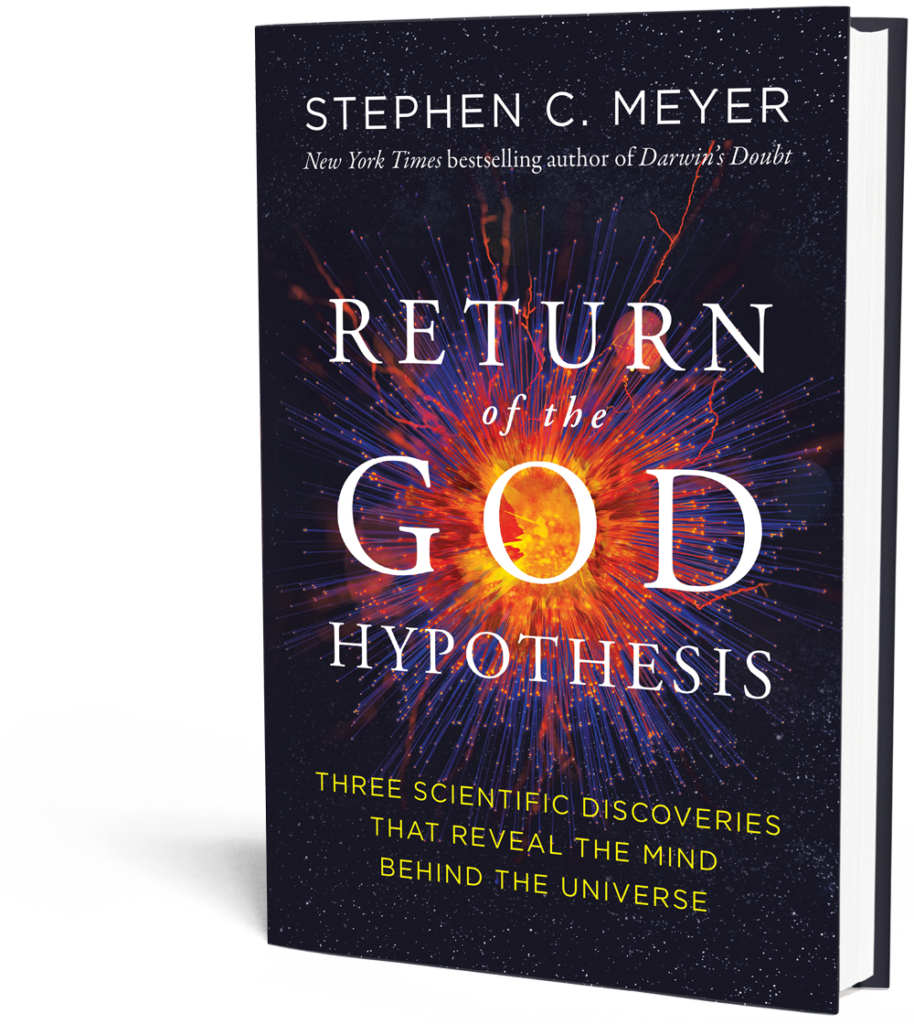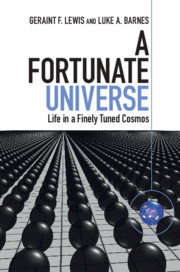Is Ours One of a Few Working Universes Among Countless Flops?
Is that probable? How would we know? Philosopher Stephen C. Meyer offers some suggestionsIn this fourth and final portion of a talk at the Dallas Conference on Science and Faith (2021), philosopher Stephen C. Meyer takes on the claim that the fine-tuning of our universe for life can be explained by the multiverse, that is, “there are many other universes with different laws and concepts of physics and different initial conditions, different arrangements that matter in energy at the beginning of those universes. And there are enough such universes to make the improbable features of our universe probable on a mega cosmic scale.”
Dr. Meyer is the author of The Return of the God Hypothesis (Harper One, 2021). (A sample of the book is here.) The first portion is here, the second here, and the third is here. Tom Gilson is the moderator of the podcast:
Stephen C. Meyer: Now, this [multiverse] idea only works — and the proponents of the multiverse tacitly understand this — if there is some connection between the universes. If the universes are separate from each other, such that they never interact in any way, or didn’t have a common cause — then the things that happen in one universe will not affect the things that happen in another — including things that happen in one universe will not affect the probabilities in another universe.
There needs to be some sort of connection. Multiverse proponents have proposed universe-generating mechanisms that enable them to portray our universe as kind of the lucky winner of a cosmic lottery. Where there’s some sort of process that’s spitting out universes at random, eventually a universe with the right combination of initial conditions and laws and constants of physics would arise.
What’s the Multiverse Generator: Two Contenders
Stephen C. Meyer: Two major universe-generating mechanisms have been proposed. Both of them form parts of speculative cosmological models. One is called the inflaton field and that’s a part of inflationary cosmology.
Another universe-generating mechanism is known as exploring the string landscape. And that’s part of something called string theory.
Let me talk just a little bit about these speculative cosmologies and where the universe-generating mechanisms fits in. And then we’ll get back to the fine tuning and show why the multiverse actually doesn’t ultimately explain it.
Inflationary cosmology
Stephen C. Meyer: The inflationary cosmological model — the inflationary Big Bang model — suggests that the universe had a beginning. But it’s expanded very rapidly for the first few milliseconds of its existence, then slowed down to a more sedate pace. But the universe in that expansion was produced by what was called an inflaton field, some sort of outward pushing energy that caused the rapid expansion of the universe. The idea is that when the inflaton field slows down or becomes less intense in certain localized areas, it shuts off. That energy level shuts off or shuts down. And when it reaches just the right energy level, it would spit out a new universe.
There [would] be an initial universe, and then there’d be these multiple bubble universes spitting out. Each of these bubble universes would have the same basic laws and constants of physics that we have in our universe because the inflaton field is operating uniformly throughout all of these bubble universes as they arise. But each new bubble universe would get a new set of initial conditions, a new configuration of mass and energy. So it doesn’t explain all of the fine tuning. It only explains one part of the fine tuning, if true.
The string landscape
Stephen C. Meyer: Now, the other speculative cosmological model is based on string theory. String theory is the idea that the fundamental units of matter are little vibrating strings of energy. And that these vibrating strings of energy make possible the elementary particles, like electrons or the quarks that make up protons and neutrons.
So for each elementary particle there’s an underlying vibrating string. And for each of the fundamental forces, there’s an underlying vibrating string. To make string theory work — for reasons that are highly theoretical and a little bit hard to explain in brief time we have — physicists had to postulate extra invisible dimensions of space. These were called compactifications of space. And associated with string theory is a whole suite of equations. The hope was that they could solve these equations and generate a description of the universe that was unique to our universe, that matched our universe in a unique way.
Instead, when the string theoretical equations were solved, describing these different compactifications of space among other things, they found a huge number of possible solutions. We didn’t get a unique solution that matched our universe.

At first that really bothered the physicists. But then some of them thought, “Well, maybe we could think of each one of those solutions as corresponding to a different possible universe.” And so they got a multiverse out of the string theoretic equations. That multiverse, or that ensemble of solutions to the string equations became known as the string theoretic landscape.
The idea was that each of the possible compactifications of space described by the string theoretic equations would correspond to a different universe with different laws and constants of physics. Not different initial conditions in this case, but different laws and constants of physics.
Moreover that there would be a kind of process of cascading down the mountain. They proposed that maybe the initial string theoretic universe was a high energy compactification of space. And then as it decayed in its energy, it would explore the other possible compactifications of space that were described by the string theoretic equations. Very heady stuff, no question.
Stephen C. Meyer: But here’s two things to think about as to whether the multiverse explains the fine tuning, as well as the theistic or intelligent design hypothesis. Two reasons to think that it doesn’t…
Occam’s Razor shaves the multiverse
First of all, it’s a very convoluted explanation. It fails the test of Occam’s razor. Occam’s razor is the idea that, all things being equal, we should prefer hypotheses that don’t multiply theoretical entities. The design hypothesis postulates one clear simple theoretical postulate, a fine tuner…
The multiverse, first of all, has multiple universes, billions of them, more than billions of them.
But it also has to postulate that
● inflaton fields exist
● inflaton fields in the process of inflation will continue eternally into the future
● the inflaton fields will in fact produce new universes.

We don’t know that, that’s just a postulation, if they have the right shutoff energies within the right shutoff time intervals.
The multiverse also has to postulate that
● strings exist and that they are the fundamental constituents of material reality.
That’s a pure theoretical postulate.
● six or seven hidden dimensions of space exist
● all of the different rectifications of these extra hidden spacial dimensions exist as different universes
● every mathematical solution to the string theoretical equations corresponds to an actually existing universe with different laws in constants of physics.
● there are enough universes to make the improbable fine tuning of our universe probable.
I call this not six impossible things before breakfast, like in Alice in Wonderland. This is eight implausible conjectures before breakfast. In my book I show that there’s actually a few more than I could fit on these two slides.
So the first reason to prefer the intelligent design hypothesis over the multiverse hypothesis is that it is much simpler in the sense of Occam’s razor. It postulates fewer abstract theoretical entities and postulates.
Can a multiverse explain away fine tuning without explaining itself first?
But the second reason to prefer intelligent design over the multiverse is that the multiverse doesn’t actually explain the fine tuning, not ultimately. Both of these universe generating mechanisms, the string theoretical exploring the landscape mechanism and the inflaton shutoff energy mechanism, the inflationary cosmology themselves require prior fine tuning — and exquisite prior fine tuning.
In the case of the inflationary cosmology, both the shutoff energy and the time interval in which that shutoff occurs have to be precisely finely tuned to generate a new universe, even in theory. In the string theoretical landscape, multiple things have to be finally tuned — the most important of which is setting the first possible universe at the highest energy level so it can cascade down the landscape to explore all the other possible ones. So that all the different universes eventually are instantiated or come into existence.
Even though the multiverse is attempting to explain the fine tuning, it actually ends up presupposing prior sources of unexplained fine tuning. And therefore it doesn’t ultimately explain the fine tuning; it just pushes the fine tuning problem back one generation… Except that there is one thing we know from experience that always produces fine tuning, or that is always associated with fine tuning, and that’s intelligence. Think of the other systems that we would say are finely tuned, a fine French recipe, an exquisite Swiss clock, or watch. Any fine piece of machinery, an internal combustion engine. Digital code in the software program, or the fine tuning that we see in the universe.
What can we learn just from the fine-tuning itself?
Fine tuning systems have in common those two criteria of design detection that we talked about: a highly improbable arrangement or set of parameters that also exemplify a functional specification. And therefore we do know of something that explains fine tuning, and that is mind or intelligence…
So, if we have evidence of an intelligent designer in the fine tuning, what kind of a designer are we talking about? Are we talking about that space alien (an immanent designer within the cosmos), or are we talking about a transcendent form of intelligence, something like God?
Well, remember something about the fine tuning. The parameters are set from the very beginning of the universe. Clearly the initial conditions of matter and energy at the beginning of the universe are so set. The initial push of that cosmological constant is from the very beginning.
And the laws and constants of physics are set very early. This poses a problem for the immanent designer. Any being within the cosmos is not going to be capable of explaining the origin of the fine tuning upon which its very existence depends.

The Australian physicist Luke Barnes, who has written the fantastic book, A Fortunate Universe, about the fine tuning says that, “an imminent intelligence might be able to move matter and energy around, but such an intelligence could not explain the origin of the initial conditions of the universe that precedes its existence, nor could it explain the features of the laws of physics that apply to it at every moment in time.”
So, when we bring the fine tuning evidence into the equation, as well as the evidence we have in biology of design, only a transcendent designer explains both…
In The Return of the God Hypothesis, I go a little further than that and argue that God conceived as traditional theists do, as a transcendent personal intelligent agent who acts in the creation after the beginning, provides the best overall evidence we have of biological, physical and cosmological evidences.
All four portions of the talk, with notes:
Here’s the first portion: If DNA is a language, who is the speaker? Philosopher Steve Meyer talks about the significance of Francis Crick’s sequence hypothesis that showed that DNA is a language of life. What sort of speaker can utter a language that produces living beings? Is it a fluctuation of a multiverse or an intelligence that underlies nature?
And the second: Has a superintellect monkeyed with our universe’s physics? Groundbreaking astronomer Fred Hoyle was a staunch atheist but then he tried showing that carbon, essential to life, could form easily… It got worse: To form carbon at all, gravitational forces must be balanced just right with the electromagnetic forces. That’s just the start…
The third: How fine tuned was our universe’s debut? The mind boggles. All the details that were there at the beginning and all work together… The math is amazing. The fact of fine-tuning — both of forces and their relationships — is generally accepted, irrespective of physicists’ religious views or lack thereof.
The fourth: Is ours one of a few working universes among countless flops? Is that probable? How would we know? Philosopher Stephen C. Meyer offers some suggestions. For one thing, even though the multiverse attempts to explain fine tuning, it actually ends up presupposing unexplained prior sources of fine tuning.
You may also wish to read: Theoretical physicist: Can’t avoid a beginning for our universe. Recent shakeups from the James Webb Space Telescope images invite fundamental questions like, Does the universe even have a beginning? The big Telescope made new data available, some of it “amazing.” And if it had only confirmed what we know, how would we know it had ever left the launch pad?
